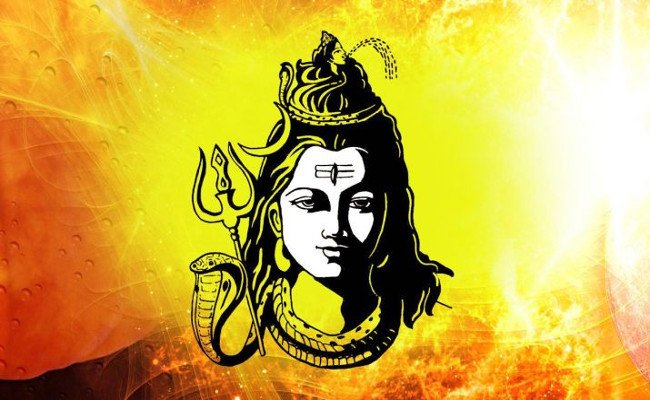In ancient Indian tradition, the significance of Shivaratri was spiritual. People considered the night more conducive than that of the day for spiritual sadhana. The Navaratri for Shakti puja, Diwali for Lakshmi puja, and Holi for mantra siddhis are such iconic, special and well-known nights of the Hindu calendar. These nights are auspicious because of various reasons. Certain astronomical configurations occur annually at this time of the year. In the following article, you would come to know about these reasons and their true purpose. You would know the different ways in which people offer their prayers to Shiva Lingam. So, let’s take a look at the scientific significance of Shivaratri to start with.
Scientific Significance of Shivaratri
There is scientific significance of Shivaratri as well. As per science, the nights are better than days anytime. Because during the day, the sun’s rays cause resistance to earthly vibrations to rise higher into the outer space. This is the prime reason why yogis prefer to do their sadhana during the night hours.
This enables the vibrations to emanate from their sadhana mantras which can drift upward to the desirable high planes of the astral world. Even in the case of radio signals- it is heard much better during the night. This is also a very common experience which occurs due to the absence of the sun’s rays.
On account of the distinct astronomical occurrence, certain favourable divine vibes descent on earth. They are obviously invisible but in abundance which comes from Shivalok. Shivalok is one of the spheres of outer space. On the night of Shivaratri, to bless devotees who remain awake and pray to Shiva during that night with a focused mind. Never thought that there was the scientific significance of Shivaratri too? Well, there you go!
Number Of Shivaratri – Significance of Shivaratri
It may surprise many to know that there are in all twelve Shivaratri, one in each month of the Hindu calendar. The Shivaratri that falls on the 13th/14th night during the Krishna paksha, in the Hindu month of Phalguna, is the Maha Shivaratri. Simultaneously, this is when it normally falls in February or early March, as per the Gregorian calendar.
Spiritual Significance of Shivaratri.
The spiritual significance of Shivaratri depends upon the planetary positions. On this day, the planetary position in the Northern hemisphere acts as a potent catalyst. This helps a person to raise his overall spiritual level. People also believe that the benefits that one receives from the recitation are enormous. The recitations are of Lord Shiva’s death-averting mahamantra, the maha mrityunjaya. Devotes especially receive manifold gains on this night. They feel like they’re in another world. All in all, it’s worth it for the devotees
Nishith Kaal
Another significance of Shivaratri is that the Shiva puja is performed in the nishith kaal. It is during this time that Lord Shiva appears on earth in the form of a lingam. In South India, on this day, one performs the most auspicious lingabhava puja in all Shiva temples. Therefore, Nishith Kaal is a must on Shivaratri.
Important Components Of Shivaratri
Another significance of Shivaratri is the rigid fasting for twenty-four hours. Yes, you heard that right! One ends up as a sleepless vigil during the night and sings songs in Shiva’s praise. One must also perform kirtan or carry out collective singing. Chanting aloud ‘Om Namah Shivaya’ and ‘Har har Mahadev’ are also a part of the entire Hindu rites and rituals.
A true devotee of the Lord spends the night in deep meditation. And at the same time, he also observes fast and keeps a tight vigil. Because of the distinctive planetary position in the sky during the night of Shivaratri, there is a natural upsurge. This upsurge is with regards to the divine energy in the human system of those who are awake and who focuse on Shiva. This is thereby beneficial for one’s physical and spiritual well-being.
Rituals As Per Shiva Purana
The significance of Shivaratri also lies in its rituals. According to Shiva Purana, one must perform it sincerely.
♦ One must do the Abhisheka or bathing of the Shiva lingam with holy water, milk, curd and honey. This act of the devotee ensures the purification of his soul.
♦ Application of vibhuti and vermillion on the lingam. Then placing wood apple and belpatra on the shiva lingam. This act aimed at receiving virtue.
♦ Lighting a lamp with ghee which is made from cow milk in front of the lingam for attaining knowledge and wisdom.
♦ Burning of incense sticks in front of the lingam. This ensures that one attains wealth and prosperity in life.
♦ Offering betel leaves on the lingam helps in gaining satisfaction from all kinds of worldly pleasures.
♦ Offering seasonal fruits on the lingam is also a ritual for a very long time. It is the art of contributing to longevity and gratification of the devotees’ desires.
♦ People also believe that Lord Shiva is constantly burning with the fire of austerity. Therefore, of all the above rituals, the abhisheka pleases Shiva the most.
Hence, all in all, only such items are kept as an offering to him that have a cooling effect. For example, coconut water, Gangajal, ghee, honey, milk, curd and water from the seven seas or seven rivers.
Faith And Sincerity Are The Bedrock Of Any Rituals
Spiritual Significance of Shivaratri lies in the vibrations or the Shiva tatwa from Shivalok that descend on earth to bless his devotees. Similarly, Guru Purnima falls on the day of Purnima or full moon in the month of ashadha (June–July). This is when guru tatwa or radiations from the planet Jupiter descend on earth. The guru tatwa is said to remain a thousand times more active on this day than on any other.
And that’s why people go to their true spiritual guru and perform guru puja to receive his blessings. In both cases, Shivaratri and Guru Purnima, faith in the tradition and sincerity in performing the rituals with a focused mind are of paramount importance. And it’s not just about Shivaratri, but for any festival. Having faith in almighty and sincerity for the rituals is of prime importance. Therefore, these wew some of the spiritual and psychological significance of Shivaratri.








